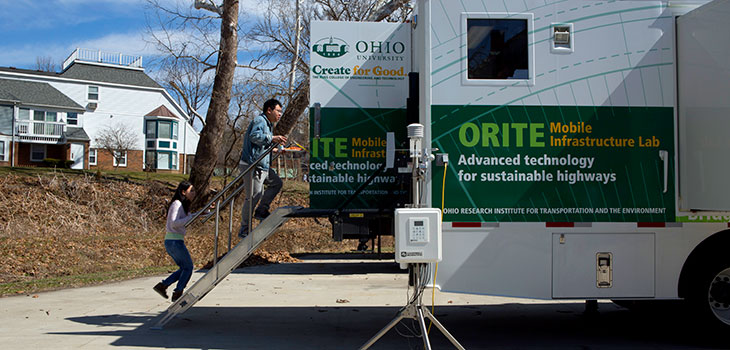About Our Facilities
The Ohio University Mobile Civil Infrastructure Laboratory (OUMCIL) is the newest major piece of equipment at ORITE and represents a major step forward in on-site testing capabilities. Among ORITE's most important features is the Accelerated Pavement Load Facility (APLF) located in Lancaster, Ohio. Constructed in 1997, the $2 million facility allows our researchers to test full-scale pavement by applying repeated loads of up to 30,000 pounds over sections of asphalt or concrete pavement under tightly controlled environmental conditions.
The Advanced Asphalt Research Laboratory, created in 2010, complements the APLF to provide hands-on training and advanced research in asphalt pavements in a world-class facility for testing of asphaltic materials. Research areas include design and analysis of flexible pavement, evaluation of pavement materials and mixes, and advanced sensor technologies for asphalt pavements.
Results from studies in the Safety and Human Factors Facility help to improve traffic flow, driver safety and comfort, as well as understand driver behavior and the impact of various demographics on driver performance. Research topics include traffic control devices, work zones, traffic signals, pavement markings, elderly mobility, and impaired drivers.
The Center for Pipe and Underground Structures (CPUS), added in 2000, expands ORITE's capabilities to include in-situ and laboratory testing of pipes and culverts. Researchers test pipe designs at the Outdoor Load Cell Facility, at a national field installation site and at an advanced laboratory for testing thermoplastic pipe.
The large Outdoor Load Cell Facility, located near the Athens campus, allows testing of underground structures—particularly pipes—by applying loads up to 1 million pounds. Pipes ranging in diameter from 6 to 60 inches have been installed at different depths with varying types of backfill.
